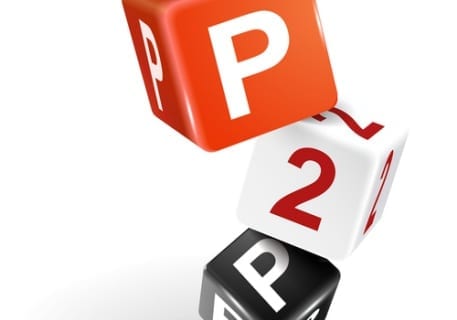As The Wind Blows, The Shift From Paper To P2P Payments Builds

The frustration is a common one, and a form of friction very well-known to the PYMNTS New Orleans Bureau, in fact: having to send a check — a paper check, with envelope and postage stamp and the hope that the mail carrier doesn’t forget to take it — to a person (say, a landlord) who for one reason or another will not get on the digital payments train, not even for peer-to-peer (P2P) transactions.
That’s not to be rude or unfair to such payments recipients. After all, according to Jeff McCrory, director of electronic payments for Fiserv, the concept of P2P payments was strange to pretty much everyone in the mainstream a mere five years ago. And receiving and sending checks is a deeply ingrained habit that’s hard to break. As well, if you talk to such people — including, say, that landlord — you will likely find out they have anxieties about the security aspect of P2P payments, which, like it or not, will play at least a modest factor in the payment method’s next phase of growth.
Bright Time
More about that in just a bit. A new PYMNTS interview with McCrory about P2P payments — where they are in 2019 and where they are headed in the 2020s — comes amid a bright, shining time for the payment method. That’s mainly due to the growth experienced by Venmo and its financial institution-centric counterpart Zelle.
Zelle P2P payments are increasing. While year-over-year payment values increased by 56 percent, transaction volume increased by 71 percent. Early Warning, the network operator of Zelle, also said that in the second quarter of 2019, “$44 billion was sent through the Zelle network on 171 million transactions.”
“There has been a full-court press [on P2P awareness] over the last two to three years,” McCrory told PYMNTS. And that marketing blitz has come as more consumers not only have an increased comfort level with their smartphones and mobile devices, but treat such devices almost as bodily appendages. “These devices have truly become ubiquitous.”
Of course, that’s not all that is working in favor of more P2P mainstream acceptance in the coming decade. The growth of the payment method is part of the larger, global trend of real-time payment deployments, a general effort that not only involves shifting consumer demand, but also development of new or improved payment technologies, along with regulatory changes. “It’s a culture of ‘I want what I want, when I want it,’” McCrory said. That culture, of course, has been crafted in large part by quick, same-day or even real-time eCommerce deliveries. “Why shouldn’t your money be fast, too?”
More Than Speed
P2P payments will offer something else besides speed and convenience in the 2020s, at least according to what McCrory told PYMNTS. It allows participating financial institutions (those that offer Zelle, for instance) or payment services providers to meet consumers on their own digital terms and stand out in an increasingly crowded and competitive field.
“Financial institutions are competing in experience,” McCrory said, a trend that reflects wider moves in the world of digital commerce. “To differentiate themselves, financial institutions are transforming themselves into consumer experience providers.”
Of course, consumers have to be brought along — and not just those who were born into a world of digital payments and commerce. “Consumer education has to teach you how to interact online. There are scammers out there,” McCrory noted, making the point that consumers need to be aware of the situations in which they should choose a payment type other than P2P payments, such as sending money to people that are not known to them.
P2P payments promise to offer lower costs than those dreaded checks — a payment method that can, McCrory said, cost between $6 and $8 to process if one takes into account all those costs of sending and accepting checks.
The rise of any number of P2P payment options has increasingly brought on board consumers seeking speed in payments, where settlement is marked by seconds and minutes, not hours or days. It’s a well-known fact, too, that corporate payments (the B2B kind) are ripe for digitization and for a wholesale move away from the paper chase, where checks are still stubbornly tied to 50 percent of corporate transactions.
Indeed, there are plans or deployments in more than 40 countries around the globe to bring faster payments or real-time payments into the fold. We can expect P2P payment to play a big role in these larger payments trends.
